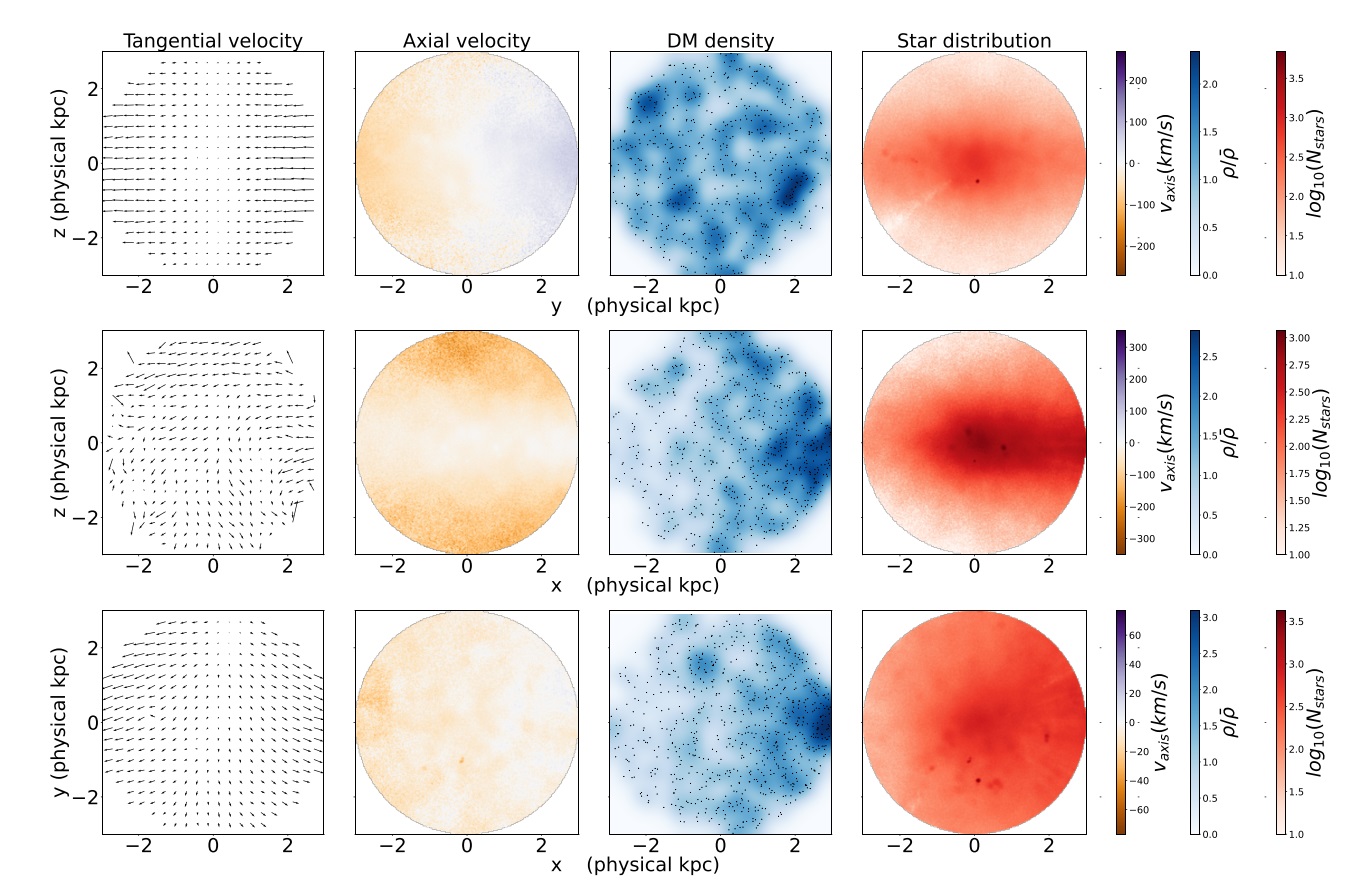Milky Way (GAIA + dark matter subhalos)
posted on March 7, 2024
Milky Way (GAIA + dark matter subhalos):

Dark matter (DM) is one of the key ingredients of the Lambda Cold Dark Matter (LCDM) model. It provides the basis for the current structure of the universe in the form of halos and subhalos. Not only each halos and subhalos can include baryonic matters within it, but also affect them by the gravity. This model proposes a nice explanation for many observations, such as the galactic rotation curve, the peculiar velocities of galaxies in clusters, and so on.
However, since DM tends not to interact with baryonic matter, we are limited in our ability to probe its nature directly, including its spatial distribution. One way could be to follow the motion of baryonic matter within DM halos and subhalos. Once we achieve the acceleration of baryonic matter, we can construct the gravitational potential around it, and then finally map the mass distribution.
In our lab we aim to use the Deep Learning (DL) technique. This method has previously been used by Hong+2021 to map the DM distribution at the cluster scale with the density and peculiar velocity of galaxies. We focus on the galaxy scale, especially the Milky Way galaxy, using the density and proper motion of stars as proxies for DM subhalos within a galaxy.
GAIA is providing one of the most valuable data releases for this study. GAIA is an astrometry space telescope operated by the European Space Agency. It provides precise information on the positions and motions of up to a billion objects in the Milky Way. The vast amount of data and the precision of the results allow us to understand the spatial and kinematic information within the Milky Way even better than before.